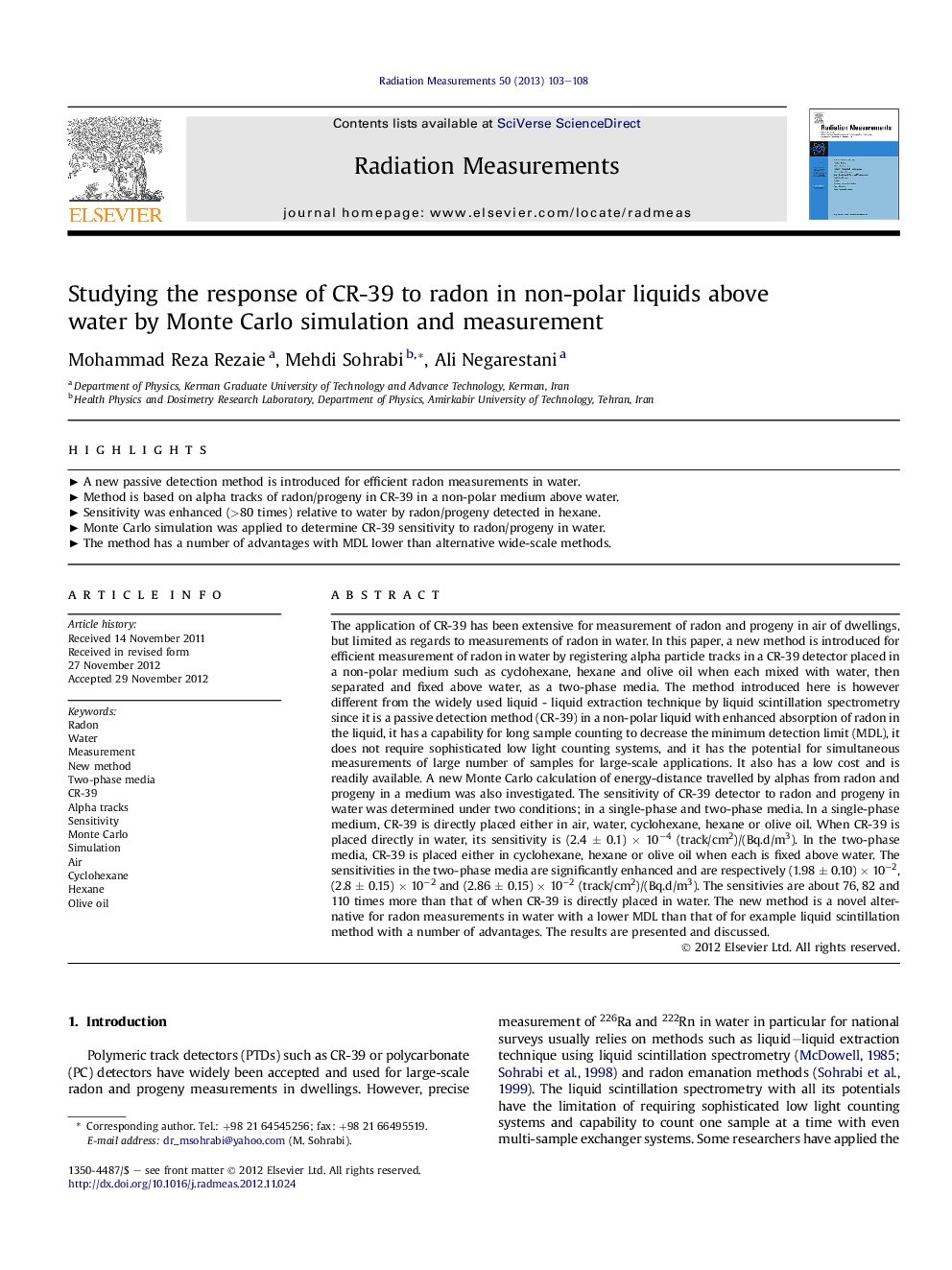| کد مقاله | کد نشریه | سال انتشار | مقاله انگلیسی | نسخه تمام متن |
|---|---|---|---|---|
| 1885062 | 1533438 | 2013 | 6 صفحه PDF | دانلود رایگان |

The application of CR-39 has been extensive for measurement of radon and progeny in air of dwellings, but limited as regards to measurements of radon in water. In this paper, a new method is introduced for efficient measurement of radon in water by registering alpha particle tracks in a CR-39 detector placed in a non-polar medium such as cyclohexane, hexane and olive oil when each mixed with water, then separated and fixed above water, as a two-phase media. The method introduced here is however different from the widely used liquid - liquid extraction technique by liquid scintillation spectrometry since it is a passive detection method (CR-39) in a non-polar liquid with enhanced absorption of radon in the liquid, it has a capability for long sample counting to decrease the minimum detection limit (MDL), it does not require sophisticated low light counting systems, and it has the potential for simultaneous measurements of large number of samples for large-scale applications. It also has a low cost and is readily available. A new Monte Carlo calculation of energy-distance travelled by alphas from radon and progeny in a medium was also investigated. The sensitivity of CR-39 detector to radon and progeny in water was determined under two conditions; in a single-phase and two-phase media. In a single-phase medium, CR-39 is directly placed either in air, water, cyclohexane, hexane or olive oil. When CR-39 is placed directly in water, its sensitivity is (2.4 ± 0.1) × 10−4 (track/cm2)/(Bq.d/m3). In the two-phase media, CR-39 is placed either in cyclohexane, hexane or olive oil when each is fixed above water. The sensitivities in the two-phase media are significantly enhanced and are respectively (1.98 ± 0.10) × 10−2, (2.8 ± 0.15) × 10−2 and (2.86 ± 0.15) × 10−2 (track/cm2)/(Bq.d/m3). The sensitivies are about 76, 82 and 110 times more than that of when CR-39 is directly placed in water. The new method is a novel alternative for radon measurements in water with a lower MDL than that of for example liquid scintillation method with a number of advantages. The results are presented and discussed.
► A new passive detection method is introduced for efficient radon measurements in water.
► Method is based on alpha tracks of radon/progeny in CR-39 in a non-polar medium above water.
► Sensitivity was enhanced (>80 times) relative to water by radon/progeny detected in hexane.
► Monte Carlo simulation was applied to determine CR-39 sensitivity to radon/progeny in water.
► The method has a number of advantages with MDL lower than alternative wide-scale methods.
Journal: Radiation Measurements - Volume 50, March 2013, Pages 103–108